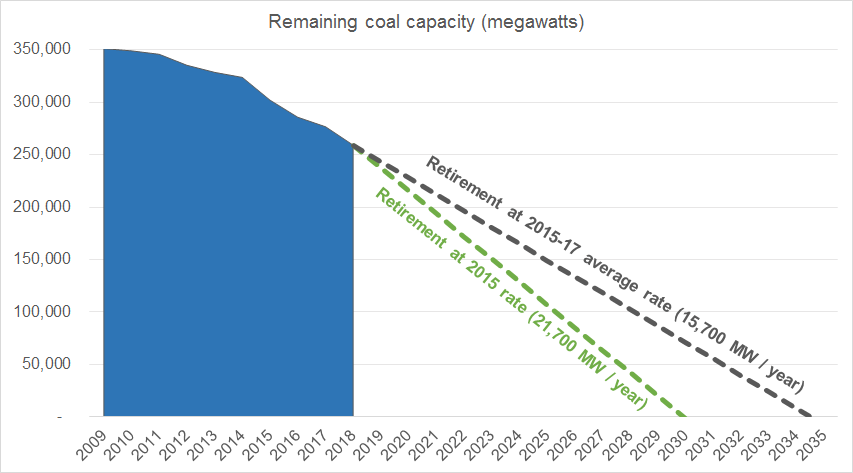If you’re alarmed or distressed by the major new climate findings released this week, I have good news to restore your hope and pull you back from the edge of despair. But first, in case you missed the headlines, the major scientific analysis released this weekend by the Intergovernmental Panel on Climate Change (IPCC) is a staggering wake-up call to action on climate.
You’ve likely seen the core conclusions: If we don’t get serious about moving off fossil fuels to an economy powered by clean, renewable energy, the effects of the climate crisis that we’re already beginning to experience, like world-changing droughts, famines, and sea-level rise, will accelerate to a “climate catastrophe” at a truly frightening pace. The report also makes clear that time is of the essence, with global temperatures on track to cross extremely dangerous thresholds in just the next decade.
However, the IPCC also says there is a path forward to avoid the worst consequences of the climate crisis if we take serious, concerted, and aggressive action now and over the next decade -- and it’s a path we’re already on. Specifically, that path forward starts with moving beyond coal. The good news is that we’re already well on our way, thanks to a decade of grassroots advocacy. In fact, we’ve secured retirement of over half the nation’s coal plants and enough renewable energy to replace them, and we’re on track to do a whole lot more in the next decade.
The Sierra Club, over 100 partner organizations, and supporters including Bloomberg Philanthropies have been working to move beyond coal in the United States for over a decade, through our Beyond Coal Campaign. Now, through aggressive grassroots campaigning, advocacy at every level of government, and effective legal strategies, more than half of the fleet of U.S. coal plants is retired or retiring. We project that as that work keeps up at its current pace and we maintain the average rate of coal retirements that we've seen over the past three years, 100 percent of U.S. coal will be retired by 2035.
You read that right. We are on track to meet the IPCC’s requirement of totally phasing out coal in the U.S. in 17 years.
The graph below captures where we are today. Between 2015 and 2017, an average of 15,669 MW of coal retired each year in the U.S., represented by the dashed gray line. Maintaining that average will phase out 80 percent of U.S. coal by 2030 and 100 percent by 2035. Increasing that average to 21,599 MW each year -- represented by the green line -- would get us beyond coal in the U.S. by 2030.

The tough talk from Donald Trump, and the allies of the coal industry in his administration, haven’t slowed the pace of coal retirements. In fact, more than 40 coal plants have retired since Trump was elected, and they’re being phased out at the same pace as they were before he took office. That explains the Trump administration’s desperate moves to save uneconomic coal plants heading for retirement.
First, it tried to force the Federal Energy Regulatory Commission (FERC) to adopt rules to force electricity customers to pay billions of dollars to coal plants to prop them up. That failed. Then, it tried to create a scheme using wartime, emergency powers to directly force taxpayers and electricity customers to pay tens of billions of dollars to bail out the same coal plants. That got put on the backburner, likely because it would be illegal. Now, it’s trying to place the architect of the original coal bailout scheme, Bernard McNamee, onto FERC as a political plant to help implement another bailout scheme through the rulemaking and enforcement processes of America’s energy markets -- something we are currently fighting against.
While the Trump administration will undoubtedly continue trying to bail out these uncompetitive coal plants, the American people and the markets are turning away from coal to renewable energy at the state and local level, which is where decisions are actually made in this country about how we produce electricity. That’s why we’re confident that, by continuing our work on the local, state, and federal levels, we can move the U.S. beyond coal by 2030.
When we do that, we will not only maintain America’s leadership in the world but also continue the shift in the marketplace toward clean, renewable energy, which is already accessible and cheaper than coal in places all over the country and the globe. Getting off of coal and fossil fuels doesn’t just help curb the climate crisis, it saves lives and saves money by cutting toxic pollution from coal plants that makes people sick and drives up medical costs. And rather than providing coal communities with false promises of a coal revival, it’s time to provide real resources for an economic transition, to honor the sacrifices made by coal communities and workers and to ensure no one is left behind as we make the shift to a clean energy economy.
We still have significant work ahead of us to move the U.S. beyond coal. And at the same time, we must also advance other essential work, including advancing electric vehicles and clean transportation, stopping the build-out of dirty and dangerous oil and gas projects, protecting our public lands and special places from drilling and mining, and creating a just and equitable clean energy transition -- all of which will help move toward the future the IPCC says we must secure in order to protect our families and our communities.
The progress we’ve made to move the U.S. beyond coal to clean, renewable energy shows that, together, we can take the concerted, aggressive action that is required of us to protect humanity, at the scale that matters. We can achieve what once seemed impossible. Let’s go. We’ve got work to do.